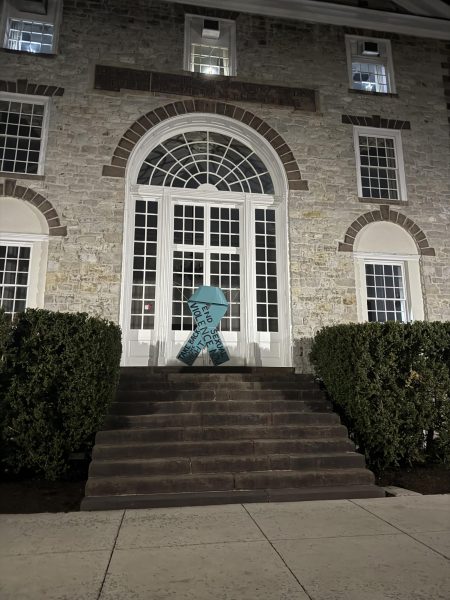CGSE Explains Phasing in and out of Study Abroad Options
Dickinson’s study abroad programs change with the educational needs and trends of the college, and some new programs have been phased in and out over the last few years.
Dickinson currently offers 16 Dickinson study abroad programs, 24 partner programs and one mosaic, according to the Center for Global Studies and Engagement (CGSE) website.
Executive Director of CGSE and Associate Provost Samantha Brandauer said the most recent changes to Dickinson programs include partner programs with Temple University in Rome, Italy; the School for International Training (SIT) in New Delhi and Jaipur, India; the Arava Institute in Israel; Institute of American Indian Arts in Santa Fe, New Mexico; and University of Otago in Dunedin, New Zealand. The newest mini mosaic offered for Spring 2019 will be to Rwanda, which “was a really popular one” with over 20 applicants, said Brandauer.
Temple was a “switch-out for what [partner organization] we had been using, SIT was a switch-out, but then the Institute of American Indian Arts, Otago and Arava weren’t,” said Brandauer.
Dickinson’s program in Yaoundé, Cameroon has just been suspended in response to instability in the country due to fighting between Anglophone separatists and the government. Likewise, the college’s program with American University in Cairo, Egypt was suspended around 2013 after the Egyptian Arab Spring. The college’s partnership with the Universidad Autónoma de Querétaro in Querétaro, Mexico was the last program to be entirely phased out due to an increase in violence in the country. “Unpredictability is the last thing we want,” said Brandauer.
Suspensions and closures happen “especially when it’s related to health and safety, and enrollment,” said Brandauer. Program suspensions and closures take input from a variety of sources, like reports from program staff, State Department reports, faculty and administrators, students, and other outside groups.
“Usually the reason that we get rid of programs, it’s all connected,” said Brandauer, “We’re replacing it with something, or you’re changing some things around or your curriculum is changing… It will always be because this is now a better fit, we’re doing this instead, or we’re backing away from this program.”
Programs are subject to change or modification as part of “a natural review process” that includes input from faculty and departments, said Brandauer. All new program development goes from the CGSE sub-committee of the All-College Committee on Academic Program and Standards, then to the full committee and finally to the full faculty for a vote.
About ten years ago, Dickinson introduced partner programs in addition to Dickinson and non-Dickinson programs. “However, for a really long time there has been a very consistent trend that about 70 percent of our students will do Dickinson programs, a fraction will do non-Dickinson and the rest will do partner programs, so that number has been pretty stable,” said Brandauer. “We really see most of our students going on Dickinson programs. Those are the ones most connected to and have grown out of our own… expertise,” she said.
CGSE’s allotted budget has stayed relatively stable over the past few years, said Brandauer. “It’s driven by student numbers, and enrollment and study abroad, and those numbers have been fairly stable,” she said.
Additional reporting for this article by Jacob Kaufhold ’21, staff writer.





